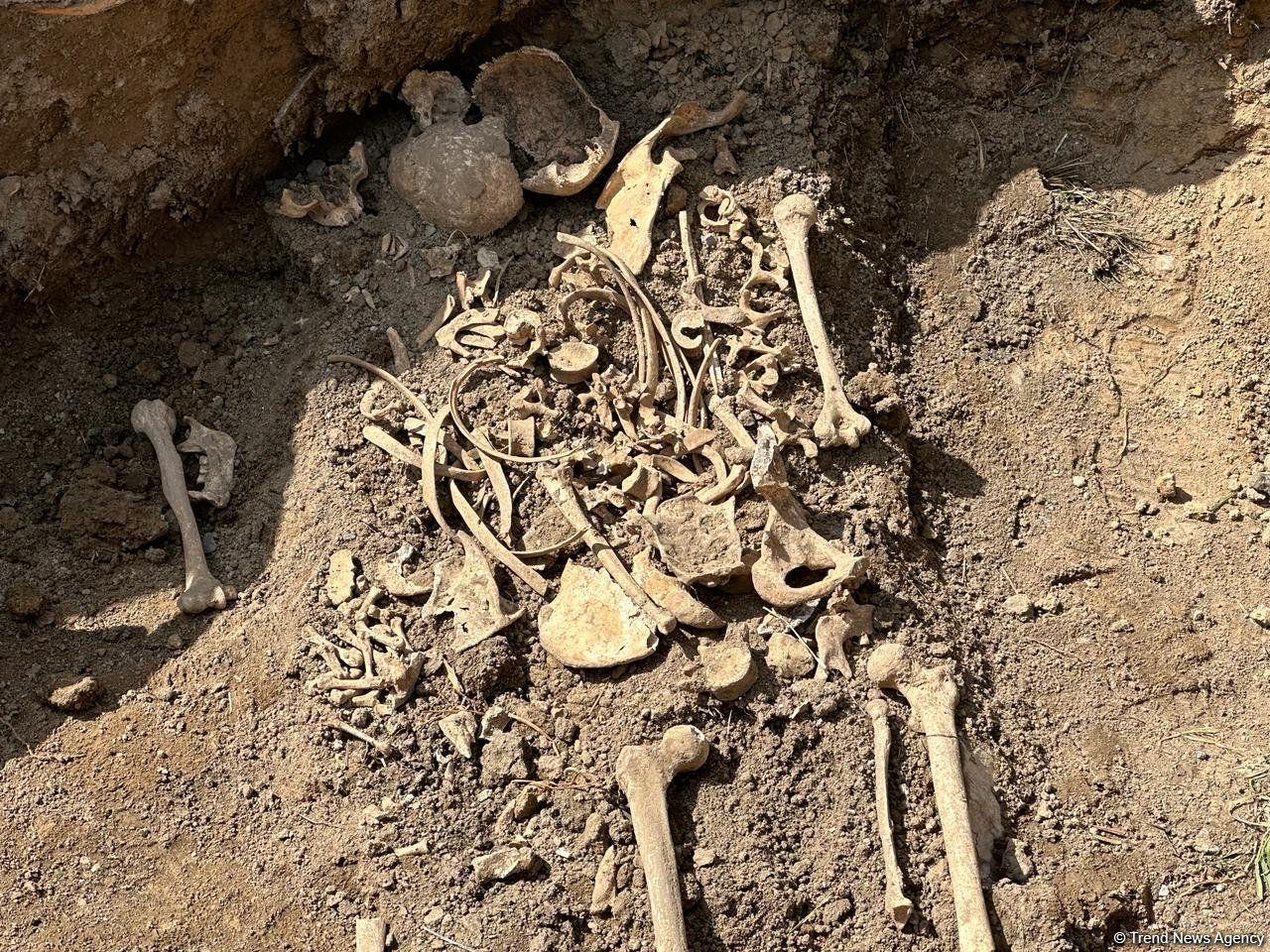
Azerbaijan Discovers Mass Graves, Continues Efforts To Identify Missing Individuals
The Garabagh conflict inflicted immense agony and trauma on Azerbaijanis, leaving deep wounds that will take a long time to heal. The conflict, marked by war crimes such as ethnic cleansing, torture, rape, and mass killings, stands as a dark chapter in the region's history. The atrocities committed by Armenians, who stained their hands with the blood of innocent people, will not be forgotten by history, which will eventually hold them accountable. The Armenian state, for its part, will also bear the judgment of history for supporting and shielding these criminals and covering up their crimes.
Despite the end of the conflict, Armenia continues to uphold and protect these criminals. Even today, Armenia refuses to provide Azerbaijan with landmine maps, which hinders demining efforts and delays the return of internally displaced persons (IDPs) to their hometowns. Furthermore, Armenia is reluctant to cooperate with Azerbaijan to clarify the fate of those who went missing during the First Garabagh War (1988-1994).
It is important to emphasize that over 15,000 people died in the First Garabagh War, and 4,210 went missing. The State Commission of the Republic of Azerbaijan on Prisoners of War, Hostages, and Missing Persons has been actively working to uncover information about these missing individuals. According to their investigations, 841 were civilians of which 47 were children, including 16 underage girls, 268 were women, and 371 were elderly people.
Some of these individuals were prisoners of war (POWs) and corresponded with their families through the International Red Cross and Red Crescent (IRCRC). However, many of these individuals, who used to send letters to their families from Armenian prisons, suddenly disappeared, and the Armenian state has never answered the questions or clarified their fate.
After the 44-day War in 2020, Azerbaijan discovered several mass graves in different parts of the liberated territories. On December 20, 2024, during a seminar in Baku dedicated to the 75th anniversary of the Geneva Conventions, Kamil Zeynalov, an investigator from the Prosecutor General's Office, announced that the remains of 602 individuals had been discovered in the liberated territories. He emphasized that the identities of 120 individuals had been established.
This means the fate of many other missing individuals remains unclear. The families of the missing continue to face prolonged uncertainty and pain, yearning for closure. Unfortunately, Azerbaijan is forced to operate alone in this regard. As previously mentioned, Armenia deliberately does not assist, and prominent international organizations have turned a blind eye and deaf ear to the situation.
Despite these obstacles, Azerbaijan continues its extensive efforts, including searches, forensic examinations, and appeals to international organizations. The ongoing search and identification efforts aim to bring closure to these families and ensure that the history of these events is accurately recorded. The discovery of the remains is a vital step toward resolving these long-standing issues, but much work remains.
The humanitarian and legal efforts to uncover the fate of the missing individuals highlight the dedication and resilience of Azerbaijan in seeking justice and healing. It is crucial for the international community to support these efforts, as the resolution of such human rights issues is fundamental to achieving lasting peace and reconciliation in the region. Only through collective action and a commitment to justice can the wounds of the past be fully addressed, allowing for a future of peace and cooperation.
Legal Disclaimer:
MENAFN provides the
information “as is” without warranty of any kind. We do not accept
any responsibility or liability for the accuracy, content, images,
videos, licenses, completeness, legality, or reliability of the information
contained in this article. If you have any complaints or copyright
issues related to this article, kindly contact the provider above.


















Comments
No comment